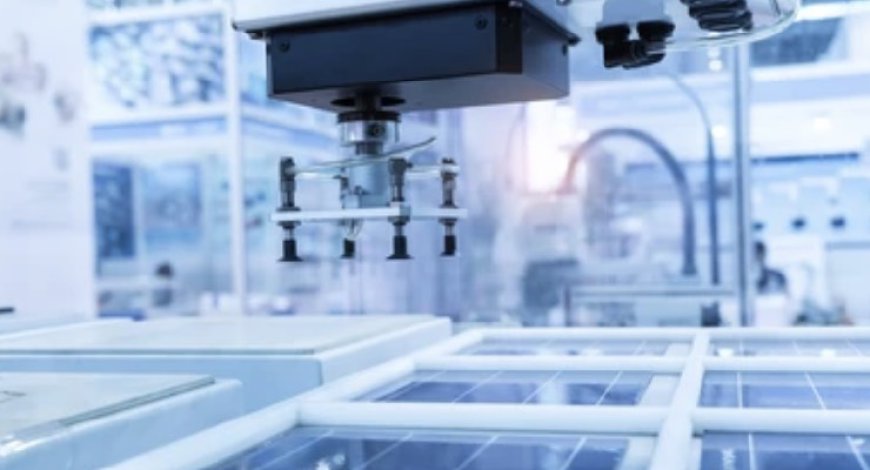The Importance of Temperature Control in Medical Device Logistics
Temperature control is a cornerstone of medical device logistics, critical to ensuring that devices arrive safely and maintain their full functionality.

In the world of healthcare logistics, temperature control plays a crucial role in ensuring that medical devices reach their destinations safely and effectively. The precise transportation of medical devices, especially those that are sensitive to environmental conditions, is critical to maintaining their integrity and functionality. Effective temperature management is essential for logistics providers who aim to meet the strict standards necessary in the healthcare industry.
Why Temperature Control is Essential for Medical Devices
Medical devices often contain delicate materials, electronics, or other components that can be compromised by exposure to unsuitable temperatures. From diagnostic equipment to surgical tools, maintaining a stable environment during transit ensures these devices arrive in optimal condition.
-
Maintaining Device Integrity
Many medical devices are designed with highly sensitive materials or components that may not withstand extreme temperatures. Exposure to heat, cold, or fluctuating conditions can lead to functional degradation. By using temperature-controlled logistics, providers can prevent these issues, preserving the device’s functionality and lifespan.
-
Compliance with Industry Standards
Regulatory bodies, such as the FDA and other international health organizations, set stringent requirements for the transport and storage of medical devices. Maintaining appropriate temperature controls is essential to comply with these standards, ensuring that products are handled according to industry guidelines and delivered in safe, usable condition.
-
Patient Safety
Medical devices play a direct role in patient care, often supporting life-saving procedures or treatments. Compromised equipment due to improper temperature management could have serious implications for patient safety. Ensuring stable temperature conditions throughout transit upholds the reliability and safety of these devices, directly impacting patient outcomes.
Key Strategies for Effective Temperature Control
To successfully transport temperature-sensitive medical devices, logistics providers implement a variety of strategies to monitor, manage, and control conditions during transit.
-
Specialized Packaging Solutions
Temperature-sensitive medical devices require specialized packaging that protects against external temperature fluctuations. Insulated containers, thermal blankets, and phase-change materials are commonly used to create a stable environment, ensuring that devices remain within a safe temperature range regardless of external conditions.
-
Climate-Controlled Transport Vehicles
Advanced transport vehicles equipped with climate control technology allow logistics providers to maintain a consistent internal environment. These vehicles can adjust temperatures based on the specific needs of the devices, providing tailored conditions that help keep sensitive equipment safe throughout the journey.
-
Real-Time Temperature Monitoring
Temperature-sensitive shipments benefit from real-time monitoring solutions, which track and report temperature data throughout the transit process. IoT-enabled sensors provide ongoing updates, allowing logistics teams to detect and respond to any deviations immediately. This level of oversight ensures devices are transported within safe conditions at all times.
-
Route Optimization
Route planning is a key component in temperature-controlled logistics, especially for medical devices. Optimizing transportation routes minimizes transit times and reduces the risk of environmental exposure. This approach not only supports better temperature control but also enhances reliability and on-time delivery, which is crucial in the healthcare sector.
-
Training and Protocols for Temperature-Sensitive Handling
Personnel involved in handling and transporting medical devices receive specialized training to ensure compliance with temperature control requirements. Clear protocols are followed during loading, unloading, and transit to maintain the integrity of the temperature-sensitive cargo, ensuring safe and efficient handling at each stage.
Leveraging Technology for Superior Temperature Control
Technology has transformed the landscape of temperature-controlled logistics. Advanced tracking and monitoring systems allow logistics providers to maintain precise control over environmental conditions, providing peace of mind to stakeholders in the healthcare industry. IoT sensors, GPS tracking, and automated alerts enable quick response times if any changes in temperature are detected, ensuring a secure journey for sensitive medical devices.
The Future of Temperature-Controlled Medical Device Logistics
As healthcare continues to advance, so too will the demands for specialized logistics solutions. Innovations in climate-control technology, data analytics, and AI-driven monitoring systems are set to elevate temperature-controlled logistics, providing even greater accuracy and reliability. This ongoing evolution will further support the safe and efficient transport of medical devices, playing an essential role in advancing healthcare.
Conclusion
Temperature control is a cornerstone of medical device logistics, critical to ensuring that devices arrive safely and maintain their full functionality. With the right strategies and technologies in place, logistics providers can navigate the complexities of transporting temperature-sensitive equipment, meeting regulatory standards, and supporting patient safety. By prioritizing temperature control, the healthcare logistics sector continues to enhance its role in delivering reliable and effective medical devices, ultimately contributing to better patient care and health outcomes.
